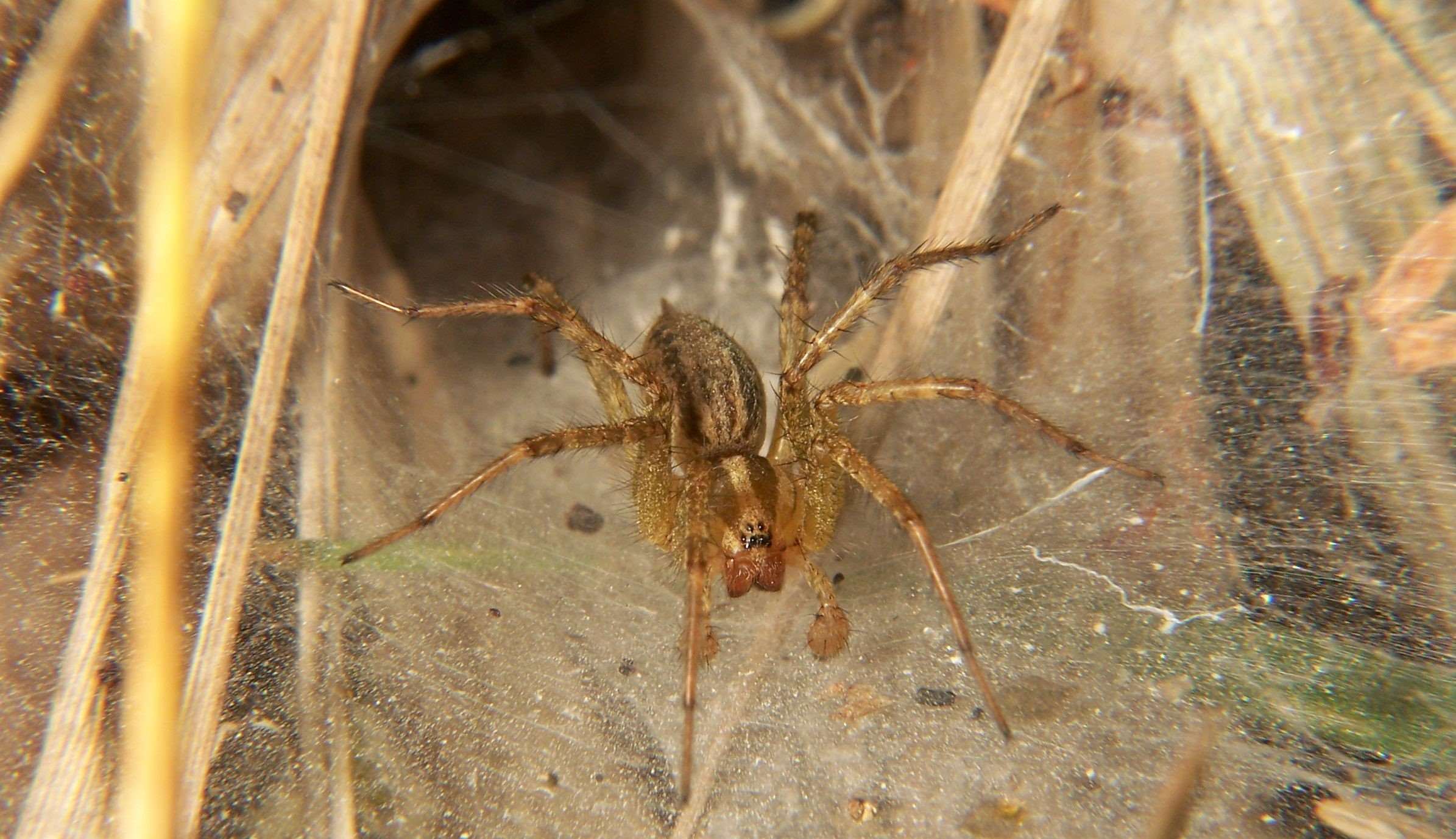
Funnel weavers, also known as Agelenids, are fascinating creatures that belong to the spider family. These small arachnids are found in various habitats including forests, grasslands, and even urban areas. Despite their common name, funnel weavers do not spin typical orb-shaped webs but instead construct funnel-shaped webs that serve as their hunting grounds.
In this article, we will uncover 16 enigmatic facts about funnel weavers that will pique your curiosity and deepen your understanding of these intriguing spiders. From their unique web-building techniques to their hunting strategies and interesting behaviors, you’ll soon discover why funnel weavers are a remarkable species worth learning about.
So, grab your magnifying glass and join us on this fascinating journey into the mysterious world of funnel weavers!
Key Takeaways:
- Funnel weaver spiders are skilled architects and hunters, using their unique webs and stealthy techniques to catch prey. They also help control insect populations, making them important members of their ecosystems.
- Funnel weavers have diverse behaviors and traits, from nocturnal habits to courtship rituals. Their venom and silk properties are even studied for potential medical applications, showcasing their significance in nature.
Funnel Weavers are Master Web Architects
One of the distinguishing features of funnel weaver spiders is their exceptional web-building skills. These spiders construct intricate funnel-shaped webs, strategically positioned to ensnare their unsuspecting prey.
Funnel Weavers Have Impressive Hunting Techniques
Using their keen sense of vibration, funnel weavers can detect the slightest movement on their webs, allowing them to swiftly pounce on their prey. Their stealthy hunting techniques make them formidable predators.
Funnel Weavers Exhibits Sexual Dimorphism
In many species of funnel weavers, males and females differ in size and appearance. Male funnel weavers are often smaller and less colorful compared to their larger, more robust female counterparts.
Funnel Weavers Are Found Worldwide
Funnel weavers have a global distribution, inhabiting various regions across the world. They thrive in diverse ecosystems, from forests and grasslands to deserts and even urban environments.
Funnel Weavers Are Incredibly Diverse
With over 1,200 known species, funnel weavers display immense ecological and morphological diversity. Each species has its unique adaptations and behaviors that have enabled them to thrive in their respective habitats.
Funnel Weavers Are Mostly Nocturnal
Many funnel weavers are nocturnal creatures, choosing to be active during the night. This is when they venture out of their silky retreats and hunt for insects that are also more active in the dark.
Funnel Weavers Exhibit Parental Care
Contrary to the common notion that spiders are solitary creatures, some funnel weaver species exhibit maternal care. Females guard and protect their egg sacs, ensuring the survival of their offspring.
Funnel Weavers Produce Venomous Bites
Funnel weavers possess venom glands and fangs, enabling them to subdue their prey and defend themselves when threatened. While their bites are generally harmless to humans, some individuals may experience mild reactions.
Funnel Weavers Are Excellent Insect Controllers
As voracious predators, funnel weavers play a crucial role in ecosystem balance by controlling insect populations. Their presence can help naturally regulate pest species such as flies, mosquitoes, and agricultural pests.
Funnel Weavers Exhibit Courtship Rituals
During the mating season, male funnel weavers perform elaborate courtship rituals to attract females. These rituals involve drumming their pedipalps on the female’s web, engaging in intricate dances to demonstrate their fitness as potential mates.
Funnel Weavers Employ Silk as a Versatile Tool
Silk plays a vital role in funnel weavers’ lives. Not only do they use it for constructing their webs, but they also utilize it for protection, cocoon construction, and creating safety lines while moving between locations.
Funnel Weavers Undergo Molting
Like other arthropods, funnel weaver spiders periodically molt, shedding their exoskeleton to facilitate growth. During this process, they emerge with a new, larger exoskeleton that can accommodate their increased size.
Funnel Weavers Have Specialized Sensory Organs
Funnel weavers possess unique sensory organs called trichobothria, which are highly sensitive to air movement. These sensory hairs help them detect prey, predators, and potential mates from a distance.
Funnel Weavers Can Live for Several Years
With the right conditions, funnel weavers can have relatively long lifespans compared to other spider species. Some individuals can live for up to three years or more, depending on their environment and available resources.
Funnel Weavers Aid in Medical Research
Researchers study funnel weaver venom and silk properties for potential medical applications. Their venom may hold key components that can be utilized in developing new drugs and treatments.
Funnel Weavers Play an Essential Role in Nature
As important members of ecosystems, funnel weavers contribute to biodiversity and ecological balance. Their presence has far-reaching impacts on various trophic levels and helps maintain the delicate harmony of nature.
There you have it, the enigmatic world of funnel weaver spiders unveiled through 16 fascinating facts. These intriguing creatures continue to captivate researchers and nature enthusiasts alike with their remarkable abilities and intriguing behaviors.
Conclusion
Funnel weaver spiders are fascinating creatures that can be found all over the world. From their unique web-building techniques to their hunting strategies, they have captivated the interest of scientists and nature enthusiasts alike. As we have explored in this article, there are several enigmatic facts about funnel weavers that showcase their remarkable characteristics.
Whether it’s their intricate web patterns, their ability to mimic ants, or their impressive maternal care, funnel weavers continue to surprise us with their adaptability and survival skills. It’s important to appreciate and protect these remarkable arachnids, as they play an essential role in maintaining the balance of ecosystems.
Next time you come across a funnel weaver spider, take a moment to observe and appreciate their intricate beauty. These creatures remind us of the wonders of the natural world and the incredible diversity that exists within it.
FAQs
Q: What is a funnel weaver spider?
A: Funnel weaver spiders, also known as grass spiders or agelenids, are a type of spider that belong to the family Agelenidae. They are characterized by their funnel-shaped webs and elongated bodies.
Q: Where can funnel weaver spiders be found?
A: Funnel weavers are found worldwide, inhabiting various habitats such as forests, grasslands, and even urban areas. They prefer building their webs in areas with low vegetation, such as on the ground or between plants.
Q: Are funnel weavers venomous?
A: Yes, funnel weaver spiders are venomous. However, their venom is not considered dangerous to humans. Bites from funnel weavers generally only result in mild symptoms such as localized pain and irritation.
Q: What do funnel weaver spiders eat?
A: Funnel weavers are carnivorous spiders that primarily feed on insects such as ants, flies, and beetles. They use their webs to capture their prey, often waiting patiently at the entrance of their funnel-shaped webs for unsuspecting insects to become entangled.
Q: How do funnel weaver spiders build their webs?
A: Funnel weavers build distinctive funnel-shaped webs that serve as both a trap and a hiding place. The spider waits at the narrow end of the funnel, sensing vibrations from its prey. When an insect becomes trapped in the web, the spider quickly rushes out to immobilize and consume its meal.
Q: Do funnel weaver spiders have any predators?
A: Funnel weavers have several natural predators, including birds, lizards, and other spiders. They have developed various defensive mechanisms, such as rapid movements and hiding in their webs, to avoid becoming prey.
Q: How long do funnel weaver spiders live?
A: The lifespan of a funnel weaver spider varies depending on the species and environmental factors. On average, they can live for one to two years, with females typically outliving males.
Q: Are funnel weavers beneficial to the ecosystem?
A: Yes, funnel weaver spiders play a crucial role in controlling the population of insects in their habitats. By feeding on pests such as ants and flies, they help maintain the ecological balance in their respective ecosystems.
Funnel weavers' enigmatic nature captivates arachnid enthusiasts and curious minds alike. Their intricate web designs, impressive hunting techniques, and diverse characteristics make them truly fascinating creatures. Beyond the 16 facts explored here, much more remains to be discovered about these skilled architects of the spider world. For those eager to delve deeper into the world of funnel weavers, our article on the extraordinary facts about barn funnel weavers offers even more intriguing insights. Unravel the mysteries surrounding these captivating spiders and gain a newfound appreciation for their vital role in ecosystems worldwide.
Was this page helpful?
Our commitment to delivering trustworthy and engaging content is at the heart of what we do. Each fact on our site is contributed by real users like you, bringing a wealth of diverse insights and information. To ensure the highest standards of accuracy and reliability, our dedicated editors meticulously review each submission. This process guarantees that the facts we share are not only fascinating but also credible. Trust in our commitment to quality and authenticity as you explore and learn with us.


